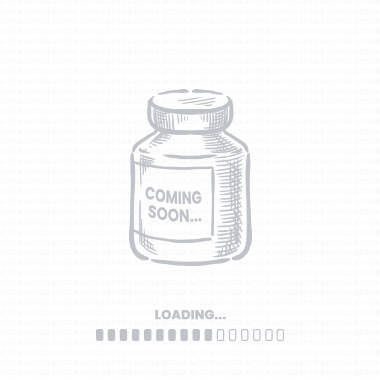
Cefazolin Injection
| Product/Composition:- | Cefazolin Injection |
|---|---|
| Strength:- | 1gm |
| Form:- | Injection |
| Production Capacity | 10 Million Injection/Month |
| Therapeutic use:- | Anti biotic/ Anti infective/ Anti fungal |
| Package Insert/Leaflet: | Available upon request |
What is Cefazolin Injection?
Cefazolin Injection is an antibiotic in the first group of cephalosporins.
It is used to fight many kinds of bacterial infections. It is a parenteral drug, which means it is injected through an IV or an IM injection, usually in a hospital setting.
Cefazolin targets Gram-positive bacteria and some Gram-negative ones.
It functions against germs that cause reactions in the skin, bones, lungs, urinary tract, and bloodstream.
A lot of people also take it prior to and during surgery to aid them from getting an illness afterwards.
Overview
Cefazolin is an antibiotic in the cephalosporin class.
Cephalosporins are physically and functionally similar to penicillins.
It functions by preventing bacteria from developing cell walls, which makes the walls weaken and finally break.
It initiates quickly and deeply in tissue. This makes it especially beneficial for people with harmful infections.
It’s also important in surgery situations to stop the elevation of infections.
Cefazolin only works on illnesses due to bacteria; it doesn’t affect viruses.
Uses / Indications
Infections of the skin and soft tissue include cellulitis, abscesses, and infections of wounds.
Pneumonia and bronchitis are part of respiratory tract illnesses that can happen when certain organisms are present.
Urinary tract infections (UTIs), notably pyelonephritis or infections that are hard to cure.
Osteomyelitis and septic arthritis are two examples of infections of the bones and joints.
Cholangitis and cholecystitis are reactions of the biliary tract.
Benefits
Works against common infections like Streptococcus species and Staphylococcus aureus, except for MRSA.
There is a quick commencement of action, which leads to a rapid rest from symptoms.
When compared to other antibiotics, Cefazolin is generally well tolerated and has fewer adverse reactions.
Great tissue penetration, especially in skeletal and joint structures, plus soft tissues.
Utilizing it as a preventive measure in surgeries lessened hospital-acquired infections.
Side Effects
How Does Cefazolin Work?
Cefazolin functions by obstructing the synthesis of bacterial cell walls.
It attaches to penicillin-binding proteins (PBPs) situated within the bacterial cell wall.
These proteins are crucial for the terminal phases of peptidoglycan production.
Cefazolin stops this process. This weakens and breaks the bacterial cell wall, leading to the bacterium’s death.
It eliminates bacteria instead of just stopping their development.
This makes it particularly efficacious for active infections.
Dosage Guidelines
When Not to Use
Known hypersensitivity to beta-lactam antibiotics, including cephalosporins and other related drugs
Anaphylactic reactions to penicillins at various points in history
Infectious diseases caused by viruses, such as the flu or the common cold
Significant compromise of renal function unless the dosage is adjusted correctly
Drug Interactions
Safety Advice
General Instructions
Only a healthcare provider should give Cefazolin Injection.
This should be done in a hospital or clinical setting.
Patients should take their medication as suggested.
This helps prevent antibiotic resistance and ensures all bacteria are vanished.
Even if symptoms improve quickly, finishing the course is essential.
Never ignore a doctor’s request for information regarding a penicillin or cephalosporin allergy.
Inject the reconstituted solution before the expiration date. Also, store it properly as instructed.
Dietary & Lifestyle Recommendations
An ideal, well-balanced diet can aid your immune system and recovery process when you take Cefazolin Injection.
To assist in eliminating the infection and maintaining healthy kidney function, drink lots of fluids.
This is particularly necessary if you are taking any other medications that can hurt the kidneys. To prevent diarrhea from antibiotics and restore your gut bacteria, eat probiotic-rich foods. Try kefir or yogurt.
Avoid alcoholic drinks during therapy. They can worsen gastrointestinal problems and elevate side reactions.
To Prevent reinfection and speed up the healing process, be sure to have adequate sleep and practice proper hygiene.
Comparison with Other Antibiotics
Compared to penicillin, it has a wider spectrum of effects and is more stable against beta-lactamases.
Ceftriaxone is a 3rd-generation cephalosporin. It can be costly. However, it may cover more areas and work longer.
Cefazolin is the first choice for methicillin-sensitive strains (MSSA), while vancomycin is only used for infections that are immune to it (like MRSA).
Cefazolin can only be given through an IV, but amoxicillin-clavulanic acid can be taken by mouth and has a wider range of effects.
Precautions & Warnings
Notice on the kidneys during long-term treatment.
Be careful to use it in people who have had stomach issues in the past, especially colitis.
People who are allergic to beta-lactams should be extra careful for signs of hypersensitivity.
Chance of getting a second infection after injecting it for a long time or many times.
What Else Can I Do to Help My Condition?
Adhere to the dosage plan exactly as it is written.
Help the body heal and avoid reinfection by keeping up with good hygiene.
In a regular schedule, check in with your healthcare providers.
Take it easy and drink enough water.
To avoid resistance, go forward and avoid using antibiotics that aren’t necessary.
